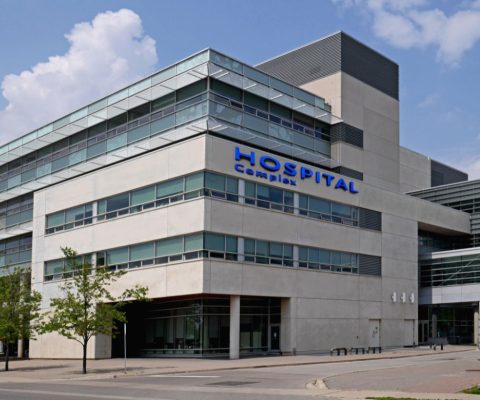
SAP is the vital solution for modernizing Healthcare Industry. Gain Insights, Grow Expertise, and Learn from HNIT's Healthcare Industry Pioneers.
The healthcare industry stands on the brink of transformative change, driven by technological advancements, evolving patient expectations, and increasing regulatory pressures. In the era of digital transformation, healthcare companies are turning to innovative solutions to streamline operations and improve business outcomes with SAP.
Which SAP technology is highly adopted by Health Care industry?
SAP S/4HANA
SAP S/4HANA is SAP's flagship ERP of SAP that offers integrated capabilities for finance, supply chain, human resources, and patient management. Tailored specifically for the healthcare industry, SAP S/4HANA for healthcare provides real-time insights, operational efficiency, and regulatory compliance, enabling the industry to deliver high-quality care and improve patient outcomes.


SAP Healthcare Information Systems (HIS)
SAP offers a range of healthcare information systems, including electronic medical records (EMR), hospital information systems (HIS), and clinical information systems (CIS). They help provide streamline clinical workflows, enhance patient care coordination, and improve clinical decision-making, leading patient satisfaction.
SAP Patient Management
SAP's patient management enable organizations to efficiently manage patient admissions, registrations, appointments, and discharge processes. By providing a centralized view of patient information and streamlining administrative tasks, that enhance the patient experience.


SAP Health Analytics
It empowers healthcare organizations to unlock insights from their data and drive informed decision-making. With advanced analytics, including predictive analytics and machine learning, it helps identify trends, predict outcomes, and optimize clinical and operational performance.
SAP Supply Chain Management (HCM)
SAP HCM is tailored for the healthcare industry, enabling organizations to optimize inventory management, streamline procurement processes, and ensure timely delivery of medical supplies and equipment. By improving supply chain visibility and efficiency, SAP healthcare supply chain management solutions help reduce costs and enhance patient safety.

How healthcare organizations gain maximum benefits form SAP?

Improved Patient Care
SAP's integrated solutions enable healthcare organizations to deliver more coordinated, personalized, and effective care to patients. It streamlines clinical workflows, enhances care coordination, and provides real-time insights that improves patient outcomes.
Operational Efficiency
SAP's ERP and healthcare management helps organization optimize their operations, automate manual processes, and reduce administrative burdens. It streamlines workflow and improve efficiency with less on paperwork.


Data-driven Decision-making
SAP's analytics solutions empower healthcare organizations to harness the power of data and make informed decisions and provides actionable insights into clinical, financial, and operational performance, with continuous innovation.
Regulatory Compliance
SAP's healthcare solutions are designed to help organizations comply with industry regulations and standards, such as HIPAA (Health Insurance Portability and Accountability Act) and GDPR (General Data Protection Regulation). It provides built-in compliance features and robust security measures to mitigate risk and ensure patient data privacy and security.

Cost Savings
By optimizing operations, improving efficiency, and reducing waste, SAP helps healthcare organizations achieve cost savings and improve financial performance. Whether it's reducing inventory costs, optimizing staffing levels, or minimizing revenue leakage, SAP enables organizations to maximize value and minimize waste.
What are the major pain points in Health Care business?
Fragmented Systems
Healthcare organizations often struggle with disparate systems and siloed data, hindering communication, collaboration, and decision-making. SAP's integrated solutions help organizations break down silos, unify data, and provide a holistic view of patient information and operations.
Complexity of Healthcare Delivery
Healthcare delivery is complex, involving multiple stakeholders, processes, and regulations. SAP's solutions help simplify complexity, streamline workflows, and improve coordination across the care continuum, from primary care to specialty services to post-acute care.
Patient Engagement
Engaging patients in their care is critical for improving outcomes and satisfaction. SAP's patient engagement solutions help organizations connect with patients through personalized communications, self-service portals, and mobile apps, empowering patients to take an active role in managing their health.
Data Privacy and Security
Healthcare organizations must safeguard patient data against security breaches and privacy violations. SAP's healthcare solutions incorporate robust security features and compliance controls to protect patient information and ensure regulatory compliance.
Cost Constraints
Healthcare organizations face increasing cost pressures due to rising healthcare costs, reimbursement challenges, and regulatory changes. SAP's solutions help organizations optimize costs, improve revenue cycle management, and achieve greater financial transparency and accountability.
SAP is playing a transformative role in reshaping the future of healthcare sector, offering innovative products and solutions that address key challenges, drive efficiencies, and improve patient outcomes.

